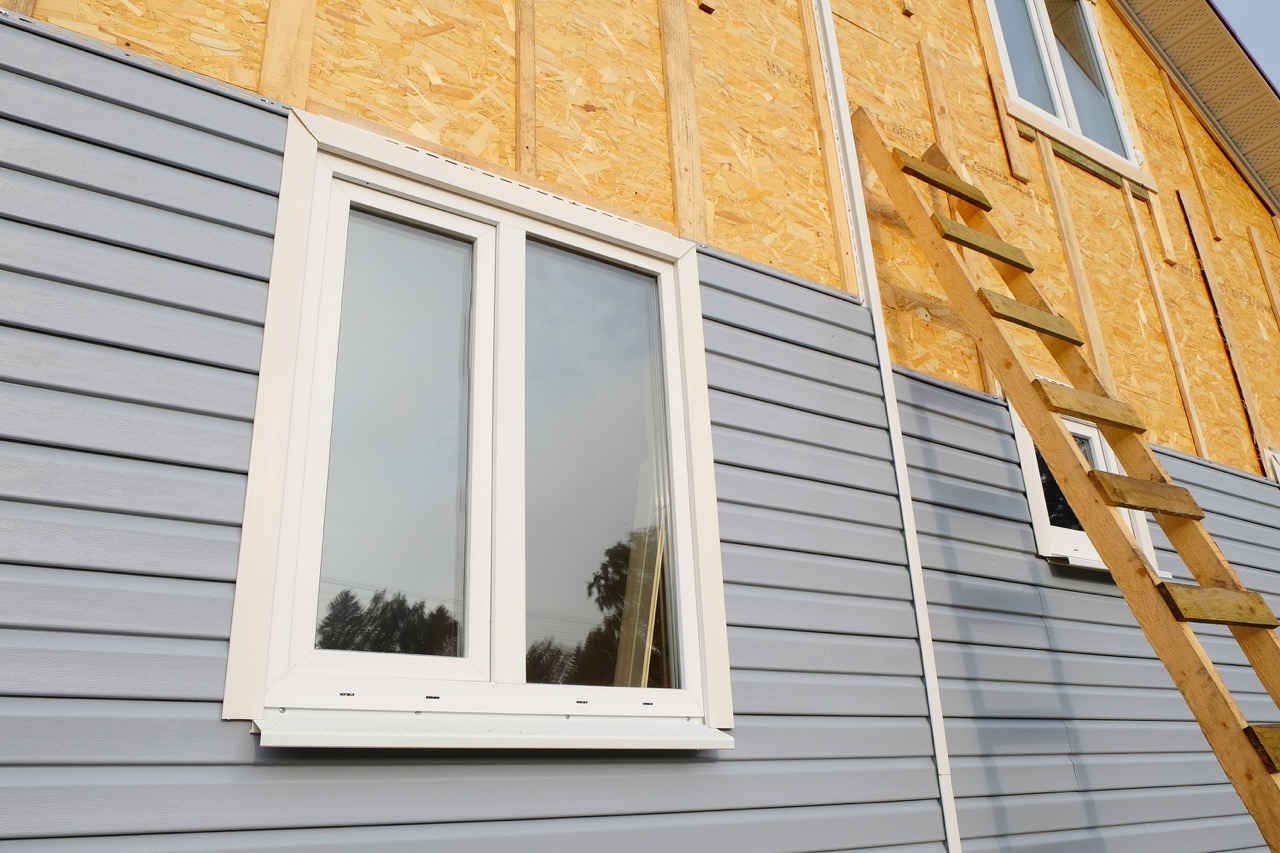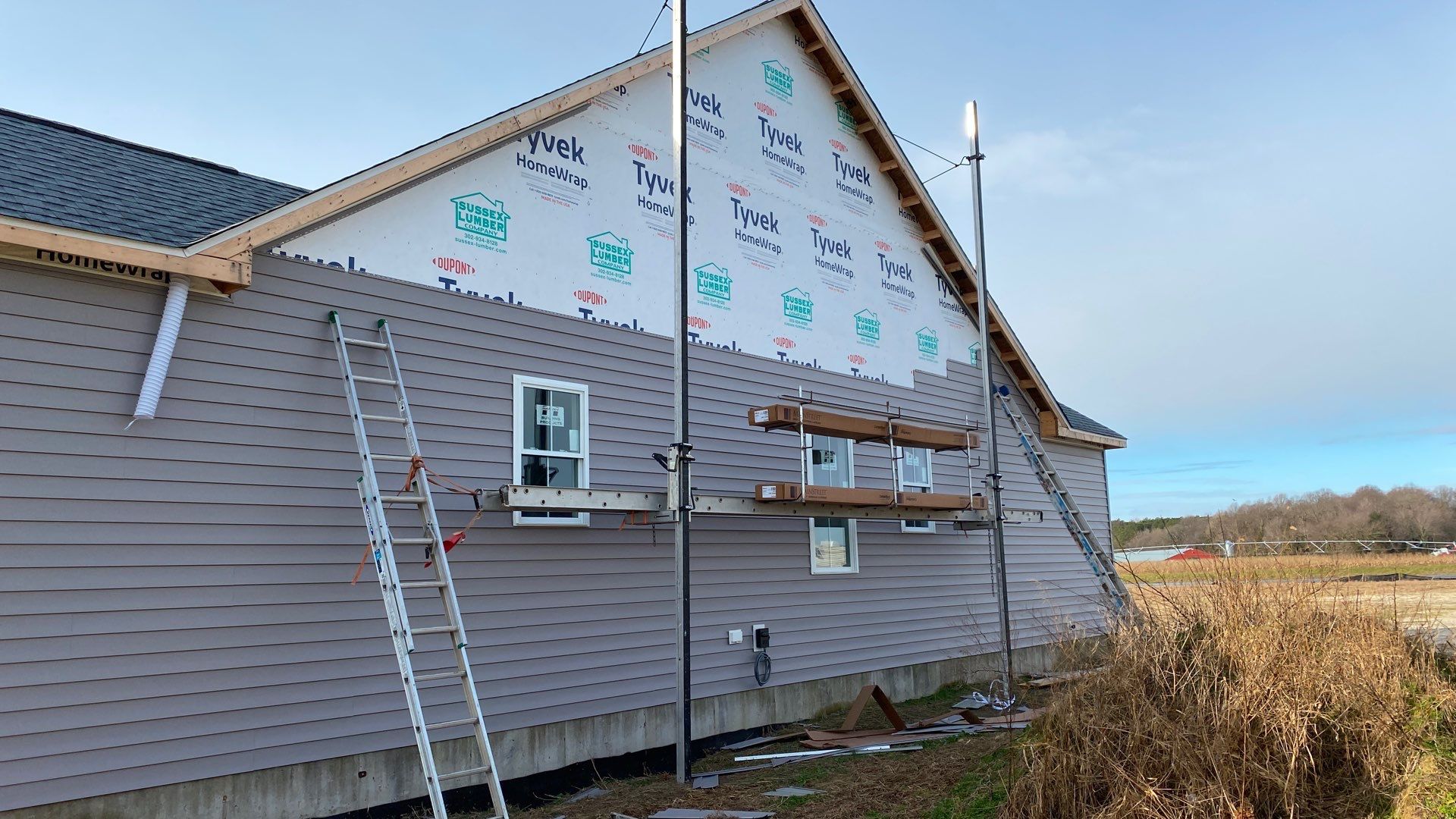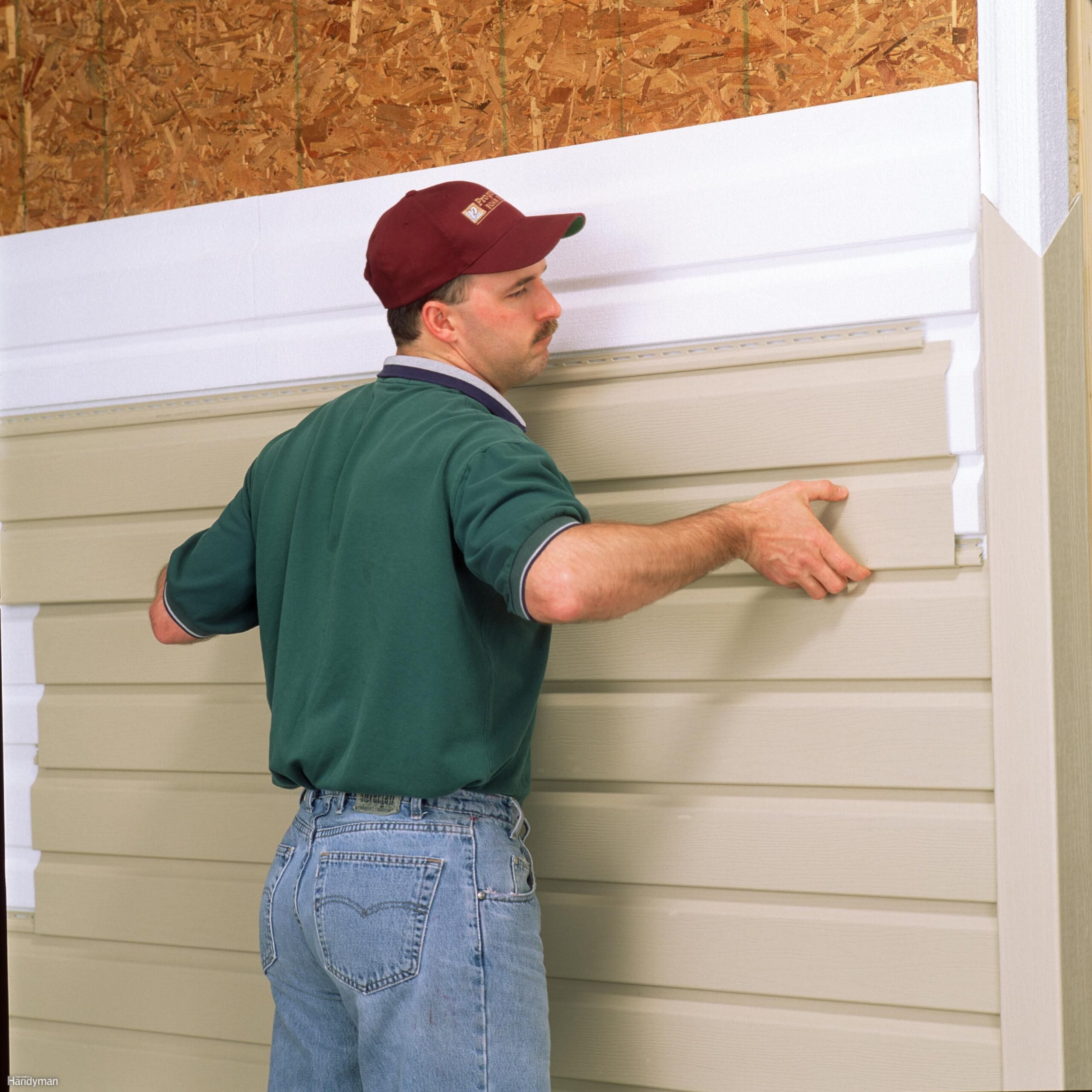Benefits of Insulated Siding: A Homeowners Guide
Benefits of insulated siding extend far beyond mere aesthetics. This isn’t just about a pretty exterior; it’s about significantly improving your home’s energy efficiency, comfort, and long-term value. We’ll delve into the financial advantages, explore the impact on your home’s climate control, and examine the durability and maintenance aspects of various siding options. Ultimately, we aim to show you how insulated siding can be a smart and worthwhile investment.
From reduced energy bills and increased comfort to enhanced curb appeal and a higher resale value, the advantages of choosing insulated siding are compelling. This guide will equip you with the knowledge to make an informed decision, weighing the initial cost against the substantial long-term benefits. We’ll explore different materials, address common concerns, and help you understand how insulated siding can transform your home.
Energy Efficiency
Insulated siding significantly reduces your home’s energy consumption, leading to lower utility bills and a smaller carbon footprint. This is achieved by creating a barrier that minimizes heat transfer between the interior and exterior of your home, regardless of the season. The savings are substantial, and the return on investment can be surprisingly quick.
Insulated siding minimizes heat transfer through walls primarily by trapping air within its structure. This trapped air acts as an insulator, slowing the rate at which heat escapes in winter and enters in summer. The material itself also plays a role; some materials are naturally better insulators than others. The thicker the siding and the higher its R-value (a measure of thermal resistance), the more effective it is at preventing heat transfer. This means less strain on your heating and cooling systems, leading to significant energy savings.
R-Values and Material Costs
The following table compares the R-values, costs, and lifespans of several common insulated siding materials. Remember that R-values can vary depending on the specific product and its thickness. These figures represent averages and should be verified with manufacturers’ specifications.
| Material Type | R-Value (per inch) | Cost per Square Foot (Estimate) | Lifespan (Years) |
|---|---|---|---|
| Fiber Cement with Foam Insulation | 2-4 | $4-$8 | 50+ |
| Insulated Vinyl Siding | 1-3 | $3-$6 | 30-50 |
| Polyurethane Foam Siding | 4-6 | $5-$10 | 30-40 |
| Wood Siding with Foam Backing | 2-4 | $6-$12 | 30-50 |
Energy Savings Comparison
While insulated siding is a highly effective energy-saving measure, it’s important to compare its benefits to other common home insulation methods. For example, adding attic insulation might offer similar or even greater energy savings for a lower initial cost. However, insulated siding addresses the exterior walls, which often represent a significant source of heat loss. A comprehensive approach that includes both insulated siding and improved attic insulation often yields the best overall results. Consider a scenario where a homeowner spends $10,000 on insulated siding and experiences a $500 annual reduction in energy bills. The investment would pay for itself in approximately 20 years, with continued savings beyond that point. This payback period will vary greatly depending on factors like climate, existing insulation, and energy prices. The key takeaway is that insulated siding, when part of a broader energy efficiency strategy, can contribute substantially to long-term cost savings and environmental responsibility.
Cost Savings
Insulated siding, while representing a higher upfront investment compared to traditional siding, offers substantial long-term cost savings primarily through reduced energy consumption and minimized maintenance needs. Let’s delve into the specifics of how this translates into a positive return on investment.
The initial cost of insulated siding installation is typically higher than non-insulated options. However, this increased initial expenditure is quickly offset by the significant reduction in energy bills. The thicker insulation layer dramatically improves your home’s thermal performance, meaning less energy is needed to heat in winter and cool in summer. This translates directly to lower monthly utility expenses, creating a continuous stream of savings year after year.
Return on Investment
A simplified illustration of the return on investment (ROI) can be visualized through a graph. Imagine a line graph with “Years” on the x-axis and “Cumulative Cost” on the y-axis. Two lines are plotted: one representing the cumulative cost of non-insulated siding (including initial installation and ongoing repairs/replacements over 20 years), and another for insulated siding (initial higher installation cost, but significantly lower ongoing maintenance and energy costs). The graph would clearly show that while the insulated siding line starts higher, it eventually falls significantly below the non-insulated siding line, demonstrating a clear long-term cost advantage. The exact point where the lines cross would represent the payback period – the time it takes for the energy savings to offset the higher initial cost. Real-world examples show that this payback period can often be achieved within 5-7 years, depending on factors like climate, energy prices, and the specific type of siding used. For instance, a homeowner in a cold climate with high energy costs would likely see a faster return on investment than someone in a milder climate.
Tax Credits and Rebates
Many government agencies and utility companies offer tax credits or rebates to homeowners who invest in energy-efficient home improvements, including insulated siding. These incentives vary by region and program. For example, the federal government in the United States may offer a tax credit for energy-efficient home upgrades, while individual states or provinces might have their own programs with different eligibility criteria and rebate amounts. Some utility companies also offer rebates to customers who install energy-efficient siding, as it reduces their overall energy demand. Specific programs and their details are readily available online through government websites and utility company portals. A homeowner should always check their local and regional programs for applicable incentives before making a purchase.
Cost Comparison Over 20 Years
A direct cost comparison between insulated and non-insulated siding over a 20-year period would typically show a significant cost advantage for insulated siding. Let’s consider a hypothetical example: Assume the initial cost of non-insulated siding is $10,000, and it requires replacement after 10 years at a cost of $8,000, plus ongoing minor repairs totaling $2,000 over 20 years. The total cost for non-insulated siding over 20 years would be $20,000. Now, let’s assume insulated siding costs $15,000 initially, but requires only minor repairs totaling $1,000 over 20 years, and because of superior energy efficiency, saves $1,000 annually on energy bills ($20,000 over 20 years). In this scenario, the total cost for insulated siding over 20 years is $16,000, a significant saving compared to the non-insulated option. This illustrates the long-term cost effectiveness despite the higher initial investment. Remember, these are hypothetical numbers, and the actual savings will vary based on numerous factors.
Home Comfort
Insulated siding significantly enhances your home’s comfort by creating a more stable and pleasant indoor environment. This goes beyond simply keeping your energy bills low; it directly impacts your daily experience within your home, leading to a more relaxed and comfortable living space. The improvements in temperature regulation and noise reduction contribute to a higher quality of life.
Insulated siding improves indoor temperature stability by acting as an extra layer of insulation against the outside elements. This means less fluctuation in indoor temperature throughout the day and year. In hot climates, it helps keep the interior cooler, reducing reliance on air conditioning. Imagine a sweltering summer day; with insulated siding, the intense heat outside has less impact on the inside temperature, making your home feel noticeably cooler and more comfortable. Conversely, in colder climates, the siding helps retain heat, minimizing the need for excessive heating and preventing drafts that can create cold spots. Picture a freezing winter morning – insulated siding ensures your home stays warmer and more consistently comfortable, preventing those unpleasant chilly drafts near windows and doors.
Temperature Stability and Draft Reduction
Insulated siding’s effectiveness in temperature regulation and draft reduction is due to its composition. The insulation layer within the siding creates a barrier that significantly reduces heat transfer. This minimizes temperature swings caused by external temperature changes and prevents cold air from seeping into the house through gaps and cracks in the exterior walls. The result is a more even and comfortable indoor temperature throughout the house, regardless of the season or external weather conditions. For example, a home with insulated siding in a region with extreme temperature fluctuations (like Denver, Colorado) will experience a more stable indoor temperature, keeping the home comfortably cool in summer and warm in winter, minimizing the need for frequent heating and cooling adjustments.
Noise Reduction
The added insulation provided by insulated siding also acts as a sound barrier, reducing the amount of external noise that penetrates your home.
- Reduced traffic noise: The insulation layer absorbs sound waves from busy streets or highways, creating a quieter interior environment.
- Minimized construction noise: If you live near a construction site, insulated siding can significantly reduce the disruptive sounds of machinery and hammering.
- Decreased wind noise: The siding’s ability to block wind reduces the whistling and howling sounds that can be particularly bothersome during storms.
- Improved sound privacy: Insulated siding can help improve sound privacy within the home by reducing the transmission of sound between rooms or from outside sources.
Healthier Indoor Environment
By preventing moisture buildup, insulated siding contributes to a healthier indoor environment. Moisture is a breeding ground for mold and mildew, which can trigger allergies and respiratory problems. The insulation layer within the siding helps to regulate humidity levels, minimizing condensation and reducing the risk of moisture-related damage and health issues. This is especially important in climates with high humidity or frequent rainfall, where moisture can easily penetrate poorly insulated walls. A home with insulated siding in a humid coastal region, for example, is less likely to experience mold or mildew growth, resulting in a healthier and more comfortable living space.
Durability and Maintenance
Insulated siding offers a significant upgrade in home protection and longevity compared to traditional siding options. Understanding the durability and maintenance requirements of different materials is crucial for making an informed decision that aligns with your budget and long-term goals. This section details the lifespan, maintenance needs, and resistance to various damaging factors for common insulated siding types.
Insulated Siding Material Comparison
Choosing the right insulated siding depends heavily on its projected lifespan and the associated maintenance. Below is a comparison of popular options. Remember that actual lifespan can vary based on climate, installation quality, and overall exposure.
| Material Type | Expected Lifespan (Years) | Typical Maintenance Tasks | Cost of Maintenance (Annual Estimate) |
|---|---|---|---|
| Vinyl | 20-40 | Occasional cleaning with soap and water; occasional repair of minor damage (e.g., cracks). | $50 – $150 |
| Fiber Cement | 30-50 | Periodic cleaning; repainting every 5-10 years; repair of chips or cracks as needed. | $100 – $300 |
| Engineered Wood | 25-40 | Regular cleaning; periodic staining or painting; potential for repair or replacement of damaged sections. | $75 – $250 |
| Metal (Aluminum or Steel) | 40-60+ | Occasional cleaning; repainting may be needed depending on the finish after several decades; repair of dents or scratches as needed. | $50 – $100 |
Weather Resistance of Insulated Siding
Insulated siding materials are designed to withstand various weather conditions. Vinyl siding, for instance, is highly resistant to moisture damage, rot, and insect infestation. Fiber cement siding, known for its durability, offers excellent protection against strong winds, heavy rain, and snow accumulation. Metal siding provides superior protection against impact damage and fire, making it a durable choice in areas prone to extreme weather. However, all materials can be affected by severe hailstorms or extreme prolonged exposure to UV radiation, which can cause fading or cracking over many years. Proper installation and regular maintenance play a significant role in minimizing weather-related damage.
Pest and Insect Resistance
While insulated siding is generally resistant to pests and insects, some materials are more susceptible than others. Wood-based sidings, even engineered ones, can be vulnerable to termites and carpenter ants if not properly treated. Regular inspections are crucial to identify and address any potential infestation early on. Preventative measures include using pest-resistant materials, ensuring proper ventilation to prevent moisture buildup, and applying appropriate pest control treatments as needed. Vinyl and fiber cement sidings are generally less prone to pest infestations due to their non-porous nature. However, cracks or gaps in the siding can provide entry points for insects. Maintaining the integrity of the siding is therefore key to preventing infestations.
Curb Appeal and Aesthetics
Insulated siding isn’t just about energy efficiency; it’s a significant upgrade that dramatically improves your home’s curb appeal and overall aesthetic value. The wide variety of styles, colors, and textures available allows for complete customization, transforming the look of your house from drab to fab. This enhanced visual appeal translates directly into a higher property value, making it a smart investment in the long run.
Insulated siding offers a diverse range of options to complement any architectural style.
Available Styles, Colors, and Textures
The sheer variety of insulated siding options allows homeowners to personalize their home’s exterior to reflect their individual taste and style. From classic clapboard to sleek contemporary panels, the possibilities are nearly endless. Color palettes range from traditional earth tones to bold, modern shades, and textures mimic everything from natural wood grain to smooth, stucco-like finishes. This wide selection ensures that there’s a perfect insulated siding solution for every home and homeowner.
Impact of Insulated Siding on Home Value
Upgrading your home’s exterior with insulated siding can significantly boost its market value. Real estate agents often cite improved curb appeal as a key factor in attracting buyers and commanding higher sale prices. The energy efficiency benefits also contribute to increased value, as potential buyers recognize the long-term cost savings associated with lower energy bills. A recent appraisal of a similar home in the neighborhood that underwent this upgrade shows a 5-10% increase in property value. This increase is directly attributable to the enhanced aesthetics and improved energy efficiency provided by the new siding.
Examples of Homes with Insulated Siding
Imagine a charming Victorian home, its aged wood siding replaced with insulated vinyl clapboard in a deep, warm gray. The new siding perfectly complements the home’s intricate trim details, creating a sophisticated and timeless look. The color choice subtly enhances the home’s architectural features, adding depth and visual interest.
Now picture a modern ranch-style house. Here, the homeowner opted for sleek, fiber cement panels in a clean, off-white shade. The smooth, contemporary texture of the siding provides a striking contrast to the home’s clean lines and large windows, creating a stylish and updated exterior. The neutral color palette makes the landscaping pop, creating a harmonious and visually appealing overall design.
Finally, consider a cozy cottage-style home. The use of insulated siding that mimics the look and feel of natural wood, in a light, warm brown, perfectly complements the home’s rustic charm. The texture adds a touch of warmth and character, while the color palette creates a welcoming and inviting atmosphere. The detailed wood grain adds depth and visual interest, while remaining consistent with the overall style of the home. These examples illustrate the transformative power of insulated siding, showcasing its ability to enhance the aesthetic appeal of a variety of home styles.
Final Thoughts
Investing in insulated siding is a decision that pays dividends for years to come. While the upfront cost might seem significant, the long-term savings on energy bills, reduced maintenance, and increased home value quickly offset this initial investment. By understanding the various benefits – from improved energy efficiency and enhanced comfort to increased durability and aesthetic appeal – you can confidently choose the best siding option for your home and enjoy a more comfortable, cost-effective, and beautiful living space.









